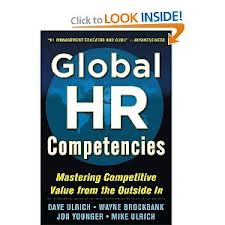 Did you know, in some countries it is illegal to email employees after normal work hours? This is just one example of the interesting global employment laws that can catch an unsuspecting employer at an inopportune time. For instance, several years ago I was sending some workers to Saudi Arabia, and we found out at the last minute that we had to abide by the “Saudization” requirement, which forced us to hire local workers to support the contract, even if they were not qualified to do the work on the project. It pays to understand the requirements of the country you are working in.
Did you know, in some countries it is illegal to email employees after normal work hours? This is just one example of the interesting global employment laws that can catch an unsuspecting employer at an inopportune time. For instance, several years ago I was sending some workers to Saudi Arabia, and we found out at the last minute that we had to abide by the “Saudization” requirement, which forced us to hire local workers to support the contract, even if they were not qualified to do the work on the project. It pays to understand the requirements of the country you are working in.
My company Lighthouse Research has partnered with Papaya Global for our 2017 Global HR Practices study, and we asked companies about their level of risk and confidence in their existing resources. One of the preliminary findings of our study highlighted that 70% of companies are at-risk due to limited understanding of local compliance requirements. Additionally, nearly three-fourths of companies manage the complexities of their global workforce in-house, creating a vulnerability to potential problems if they are unaware of local customs, requirements, and regulations.
Did You Know? Global Employment Law Differences
It has been said that companies based in the United States have it “easy.†In terms of labor laws, there are relatively few that govern how businesses operate. Take the common “employment at will†doctrine for example. In essence, companies can terminate workers at any time and for any reason as long as it's not explicitly based on a discriminatory reason. In other countries, work contracts, workers' councils, unique benefits requirements, and strict termination rules that define the employment relationship are common.
- Other countries however, commonly rely on actual employment contracts to hire workers. Because workers are tied to contracts, terminations often become complicated. For instance, in Dutch employment law, the statutory period of notice for an employee is one calendar month.
- During one research interview, an international human resource management leader at a German company took some time to explain her challenges with the local workers' councils. In her story, the company was trying to gather data through an employee survey, but the workers' council would not allow the HR team to share the information with the consulting partner to analyze and interpret the data, creating a stalemate.
- Other challenging areas include benefits and leave. For instance, employers must pay Chinese workers 300% of the value of any unused vacation days at the end of the year
- Brazil requires employers to offer employees thirty calendar days of paid leave after twelve months of service.
It's clear that without some awareness of the requirements for global employment, companies can often make costly missteps, but there are ways to minimize the risk associated with global employment. Want to learn more? Check out the rest of the blog at Papaya Global to learn how to get educated before it’s too late.
